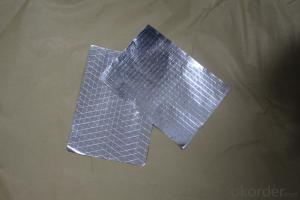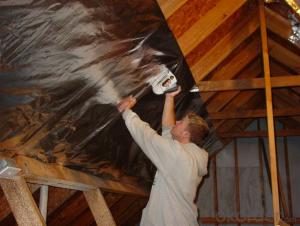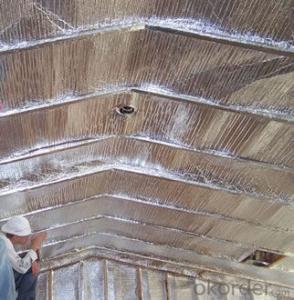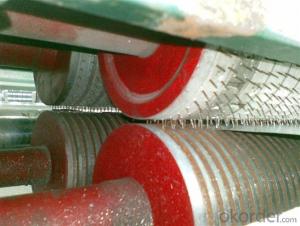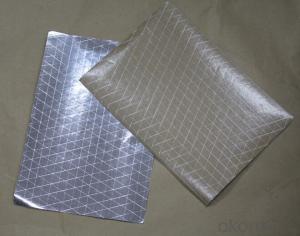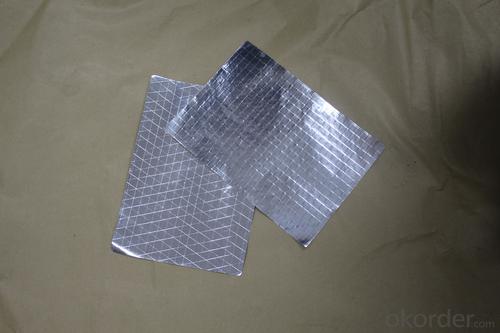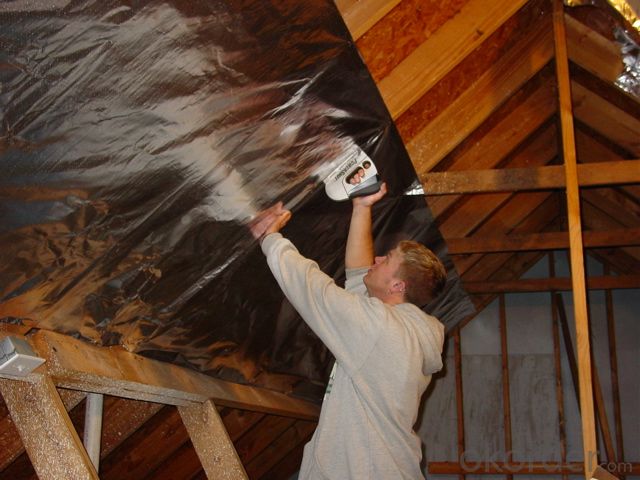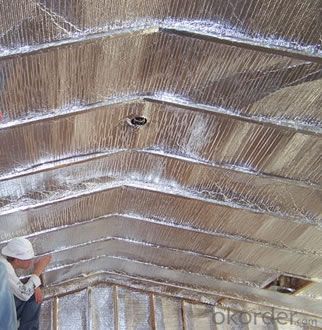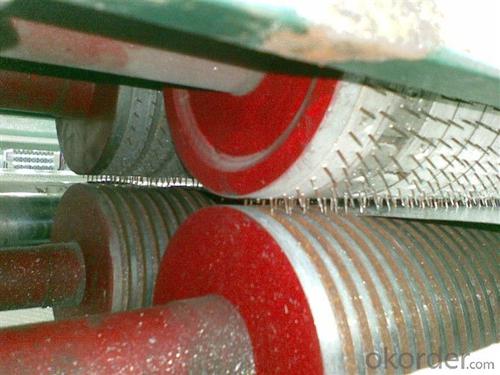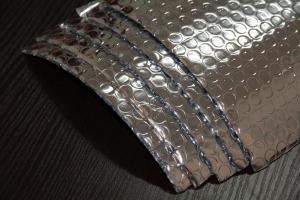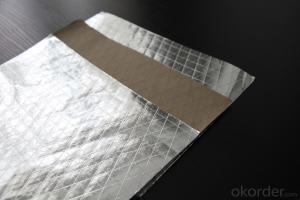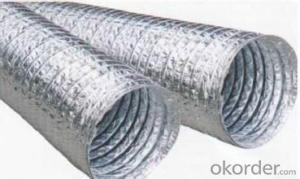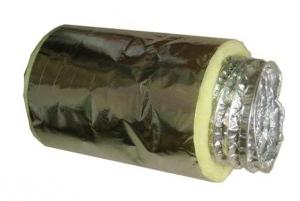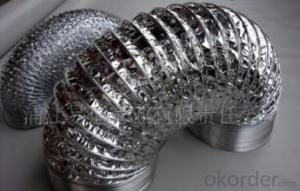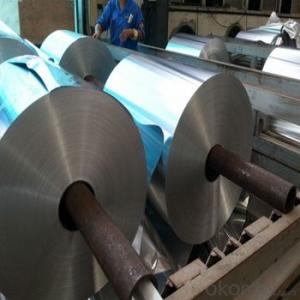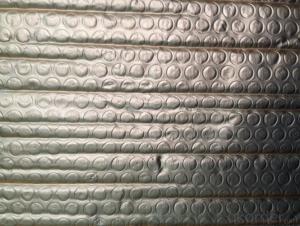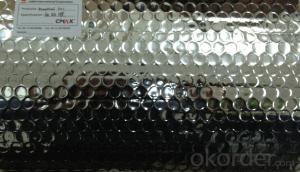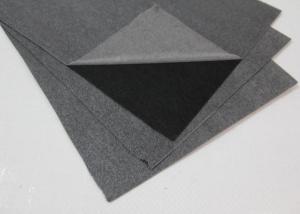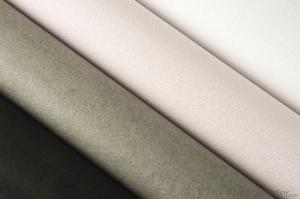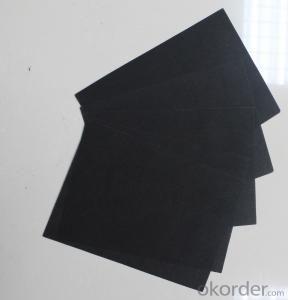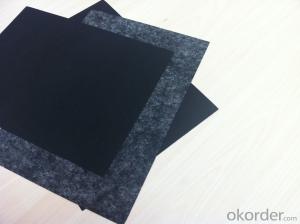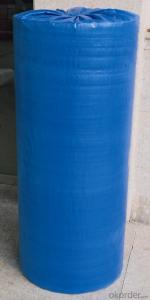Fiberglass Facing Flexible Ducts Bubble Film
- Loading Port:
- China Main Port
- Payment Terms:
- TT OR LC
- Min Order Qty:
- -
- Supply Capability:
- -
OKorder Service Pledge
OKorder Financial Service
You Might Also Like
Application:
1,Building Thermal Insulation Material
(1),Roof,Underlay,Under Concrete & floor Insulation;
(2),Attic,Crawl Space,Stud Wall ,Metal Frame Building Insulation.
2,Wrapping
(1),Protective coatings of ventilating pipe,HVAC Duct & Pipe;
(2),Shells of air conditioner and water heater.
Feature:
1), Waterproof, heavy duty, clean, light, flexible, non-absorbent surface
2), Fire resistant & antiglare
3), Recyclable, environmentally friendly
4), Effective in extreme temperatures both hot and cold
5), Easily install, cut, stapled, nailed or glued into place
6), Safe to handle with no special clothing or breathing Equipment
Feature:
1), Waterproof, heavy duty, clean, light, flexible, non-absorbent surface
2), Fire resistant & antiglare
3), Recyclable, environmentally friendly
4), Effective in extreme temperatures both hot and cold
5), Easily install, cut, stapled, nailed or glued into place
6), Safe to handle with no special clothing or breathing Equipment
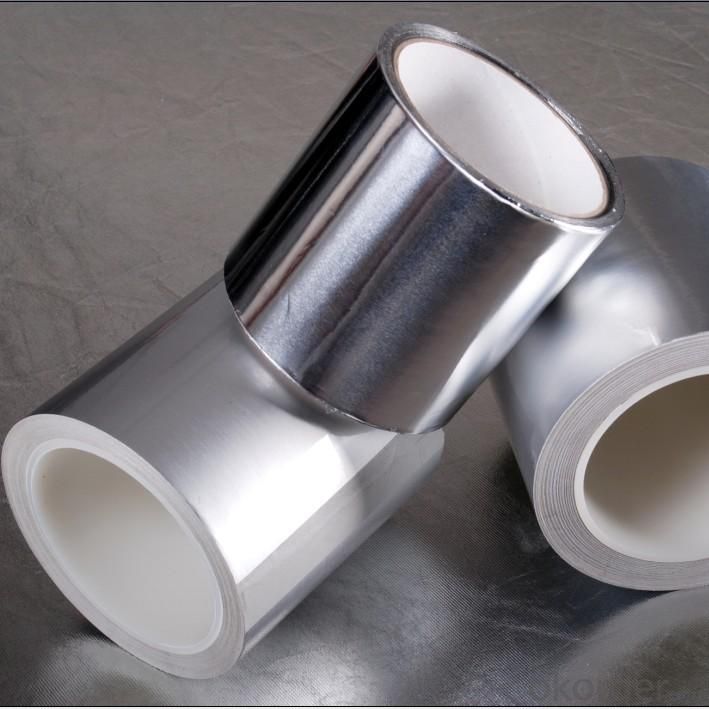
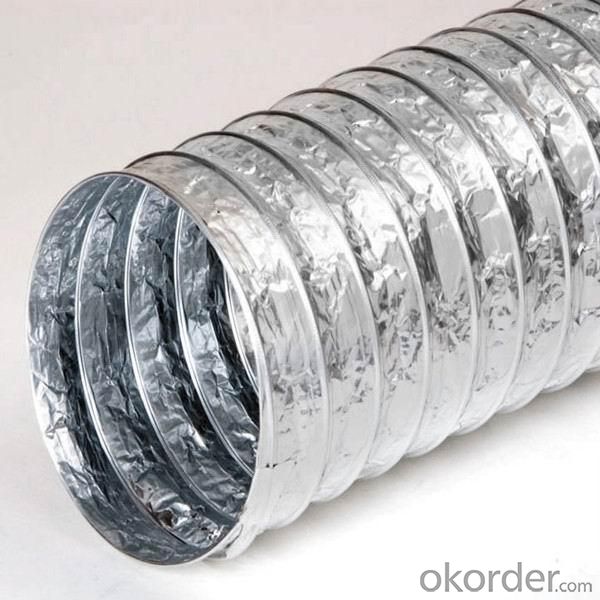
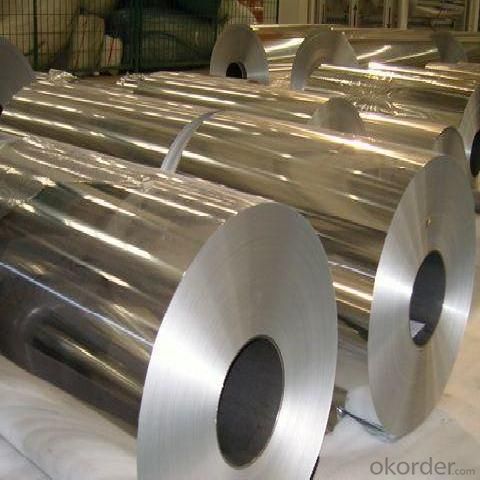
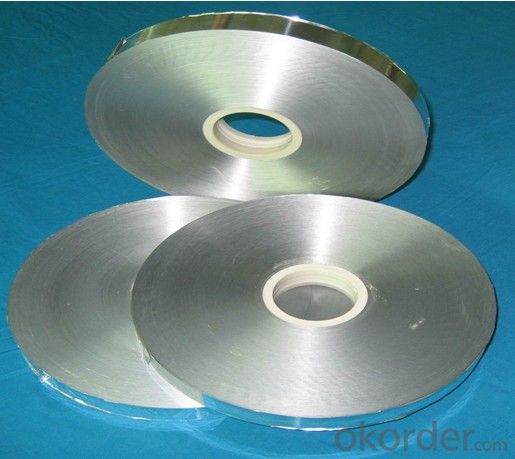
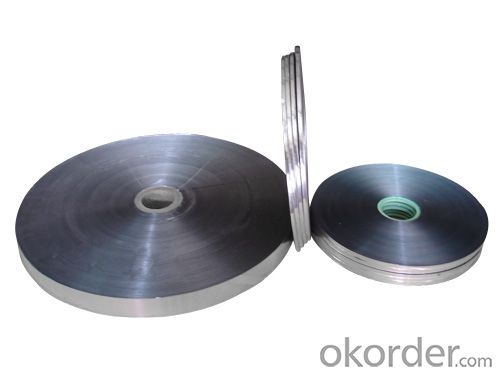
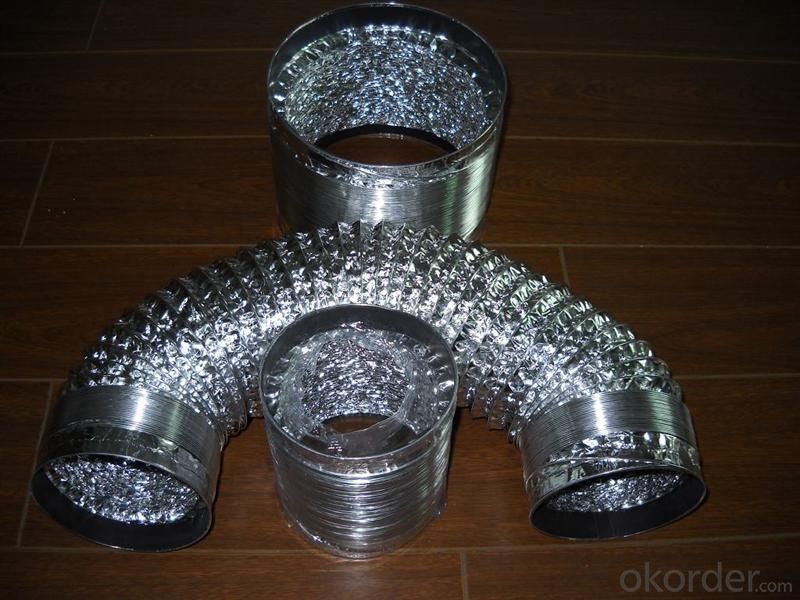
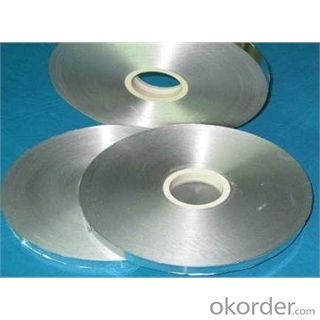
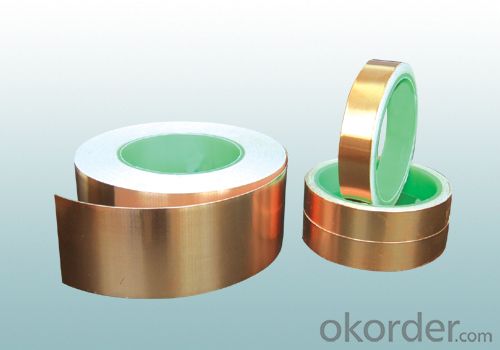
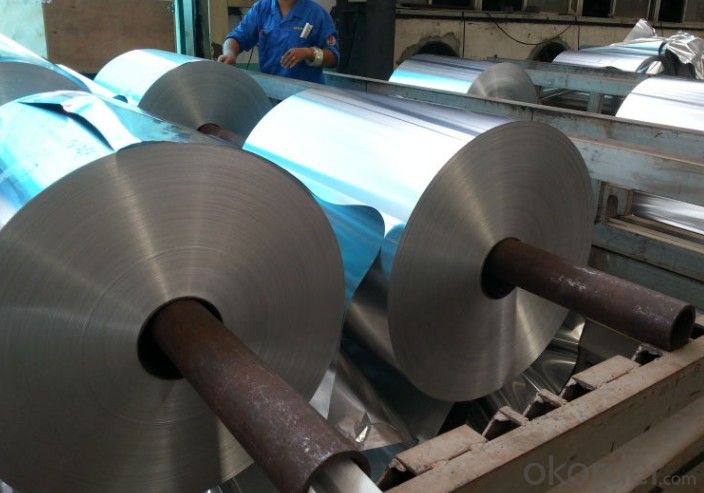
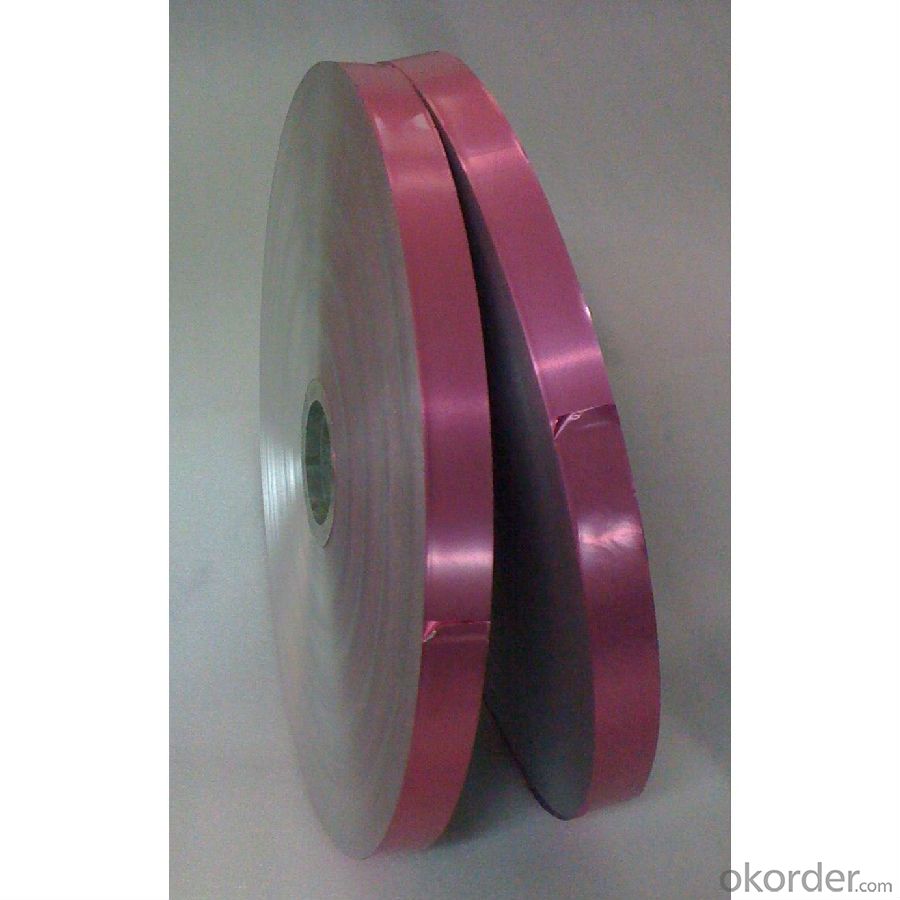
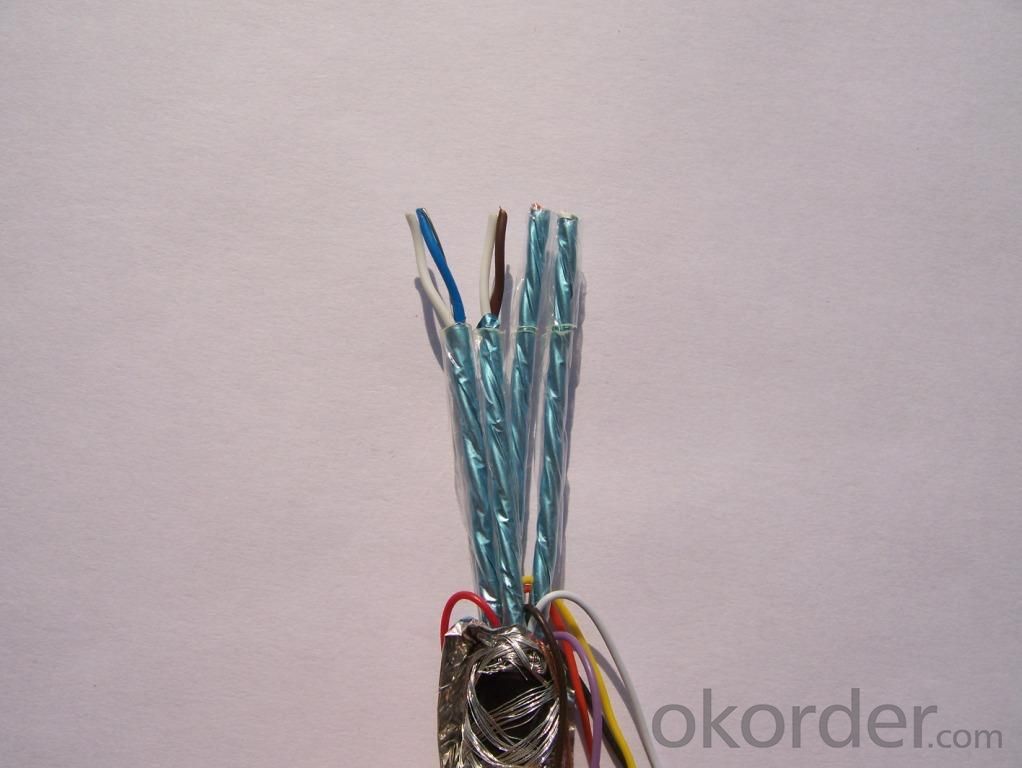
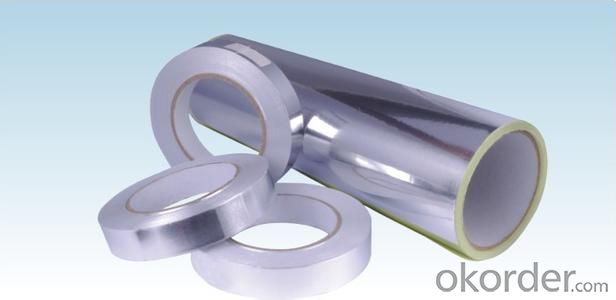
- Q: This question asks about the methods used by manufacturers to maintain the quality of black fiberglass tissue during the manufacturing process.
- <p>Manufacturers ensure the quality of black fiberglass tissue during production through several key steps. They start with high-quality raw materials, such as virgin glass fibers and resins, to ensure strength and durability. They also implement strict quality control measures, including regular testing of the tensile strength, flexibility, and uniformity of the fibers. Advanced manufacturing techniques, such as precision weaving and controlled resin application, are used to maintain consistency in the product. Additionally, environmental controls like temperature and humidity regulation are maintained to prevent variations in the material properties. Finally, post-production inspections and testing are conducted to verify that the final product meets all quality standards before it is released to the market.</p>
- Q: Is it safe and practical to use black fiberglass tissues as a material for making a sandwich?
- <p>No, you should not use black fiberglass tissues to make a sandwich. Fiberglass is a material made of fine fibers of glass, which is not edible and can be harmful if ingested. It is typically used for insulation, reinforcement, and construction purposes. For making sandwiches, use food-safe materials such as bread, tortillas, or lettuce wraps.</p>
- Q: Is it possible to use black fiberglass tissue in the manufacturing of furniture?
- <p>Yes, black fiberglass tissue can be used for furniture manufacturing. It is known for its strength, durability, and resistance to various environmental conditions, making it suitable for creating sturdy and long-lasting furniture. Fiberglass is often used in outdoor furniture and certain types of modern indoor furniture due to its versatility and ability to be molded into various shapes. However, it's important to consider the aesthetic appeal and the specific requirements of the furniture design when choosing to use black fiberglass tissue.</p>
- Q: What kind of black fiberglass tissue is recommended for use in cold weather conditions?
- <p>Yes, there is a specific type of black fiberglass tissue designed for use in cold climates. This type of fiberglass is often referred to as 'weather-resistant' or 'cold-resistant fiberglass.' It is engineered to maintain its strength and flexibility in low temperatures, preventing brittleness and breakage. This special formulation is crucial for applications where the material will be exposed to freezing temperatures and harsh weather conditions, ensuring durability and longevity.</p>
- Q: This question asks for a list of various types of fiberglass wipes that can be found in the market.
- <p>Fiberglass wipes come in several types, each designed for specific applications. The main types include: 1) General Purpose Wipes: These are versatile and can be used for cleaning, polishing, and degreasing fiberglass surfaces. 2) Abrasive Wipes: These have a coarse texture for removing stubborn dirt, rust, or paint. 3) Microfiber Wipes: Soft and non-abrasive, ideal for polishing and cleaning without scratching. 4) Solvent-Resistant Wipes: Designed to withstand harsh chemicals, useful in industrial settings. 5) Heavy-Duty Wipes: Stronger and more durable for heavy cleaning tasks. 6) Antistatic Wipes: These help reduce static electricity, useful in electronics cleaning. Each type has its unique properties, and the choice depends on the specific requirements of the task at hand.</p>
- Q: This question asks for the methods to clean and maintain black glass fiber cloth.
- <p>To clean and maintain black glass fiber cloth, follow these steps: 1. Use a soft brush or vacuum cleaner with a brush attachment to remove loose dirt and dust. 2. For stubborn stains, mix a mild detergent with warm water and gently dab the affected area with a soft cloth. Avoid rubbing or scrubbing as it may damage the fibers. 3. Rinse the area with clean water and pat dry with a soft towel. 4. Avoid using harsh chemicals, bleach, or high heat, as they can degrade the fibers. 5. Regularly inspect the cloth for signs of wear and tear, and replace it if necessary to maintain its performance and appearance.</p>
- Q: The user is asking if they can repurpose lint from their dryer to create homemade black fiberglass tissues.
- <p>No, you cannot use dryer lint to make black fiberglass tissues. Dryer lint is composed of fibers from clothing and other materials, which are not the same as the glass fibers used in fiberglass production. Fiberglass is made from fine filaments of glass that are combined with a resin to form a composite material. It requires specific manufacturing processes and materials that are not present in dryer lint. Using dryer lint for this purpose would not yield the desired strength, durability, or properties of fiberglass tissues.</p>
- Q: What is the resistance of black fiberglass tissue to color fading or change when exposed to various conditions such as light, washing, and heat?
- <p>The colorfastness of black fiberglass tissue is typically high, as it is designed to resist fading and color changes under various conditions. It is resistant to light, washing, and heat, maintaining its color integrity even after prolonged exposure or repeated use. This makes it suitable for applications where color stability is crucial, such as in construction materials, automotive parts, and other industrial uses. However, the exact level of colorfastness can vary depending on the specific manufacturing process and the quality of the fiberglass tissue.</p>
- Q: This question asks for the optimal methods to install black fiberglass tissues, which are commonly used for insulation or flooring purposes.
- <p>The best ways to install black fiberglass tissues for insulation or flooring involve the following steps: 1. Preparation: Ensure the area is clean and dry. 2. Measuring and Cutting: Measure the area and cut the fiberglass to fit precisely. 3. Laying the Fiberglass: Start from one corner and work your way across, ensuring the material lays flat without wrinkles. 4. Securing the Fiberglass: Use adhesive or mechanical fasteners to secure the fiberglass in place. 5. Overlapping: When necessary, overlap the sheets and secure the overlap to prevent gaps. 6. Finishing: Apply a vapor barrier or underlayment if required, and finish with the desired flooring material. Always follow the manufacturer's instructions for the specific product being used.</p>
- Q: Is it possible to use black fiberglass tissue as a material for creating a bedspread or blanket?
- <p>While it is technically possible to use black fiberglass tissue to create a bedspread or blanket, it is not recommended. Fiberglass is a type of plastic material known for its strength and insulation properties, but it is not designed for comfort or direct contact with the skin. It can be rough and may cause skin irritation. Traditional bedding materials like cotton, wool, or synthetic fibers are softer, more comfortable, and better suited for use in bedspreads and blankets.</p>
Send your message to us
Fiberglass Facing Flexible Ducts Bubble Film
- Loading Port:
- China Main Port
- Payment Terms:
- TT OR LC
- Min Order Qty:
- -
- Supply Capability:
- -
OKorder Service Pledge
OKorder Financial Service
Similar products
Hot products
Hot Searches
Related keywords
